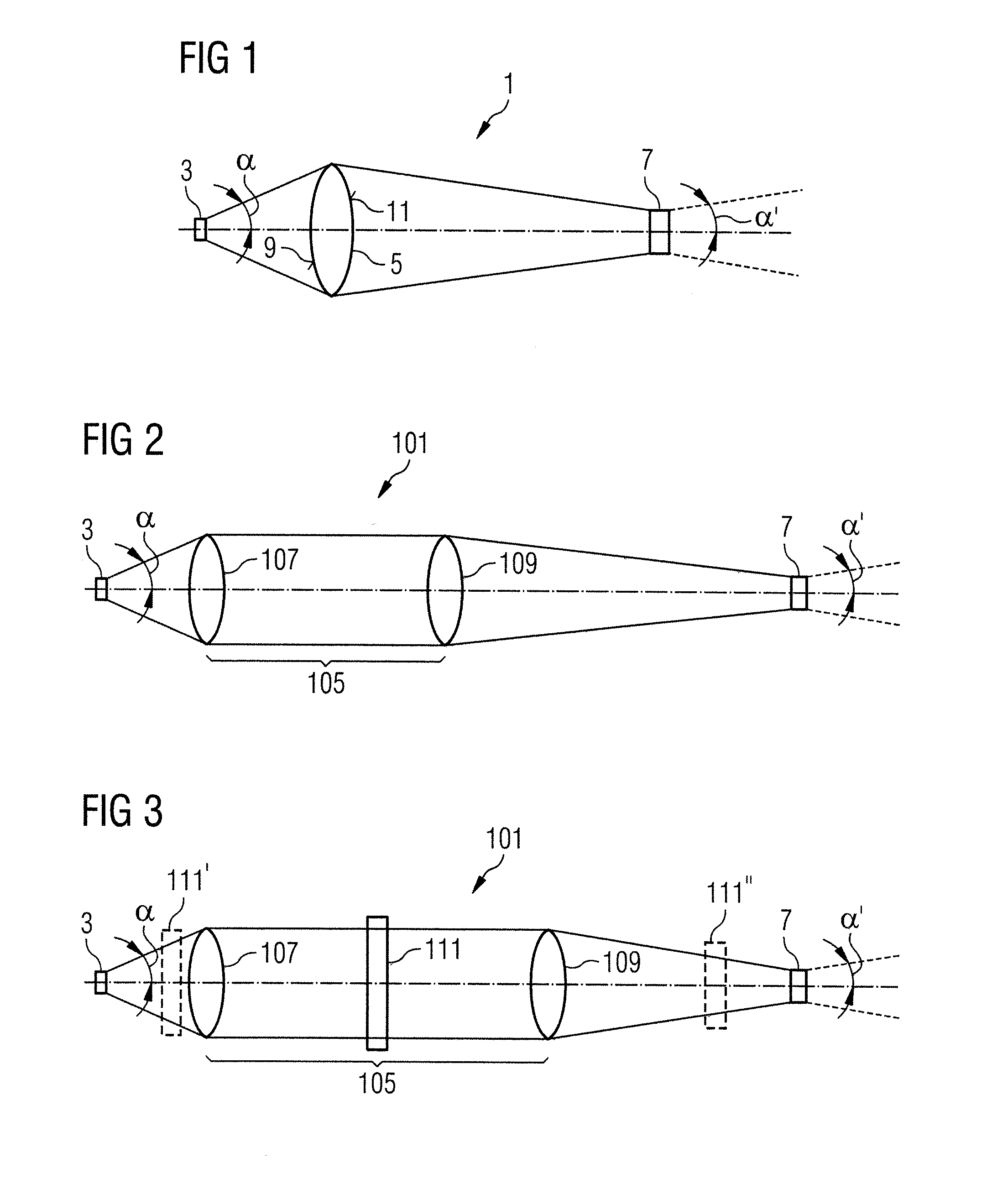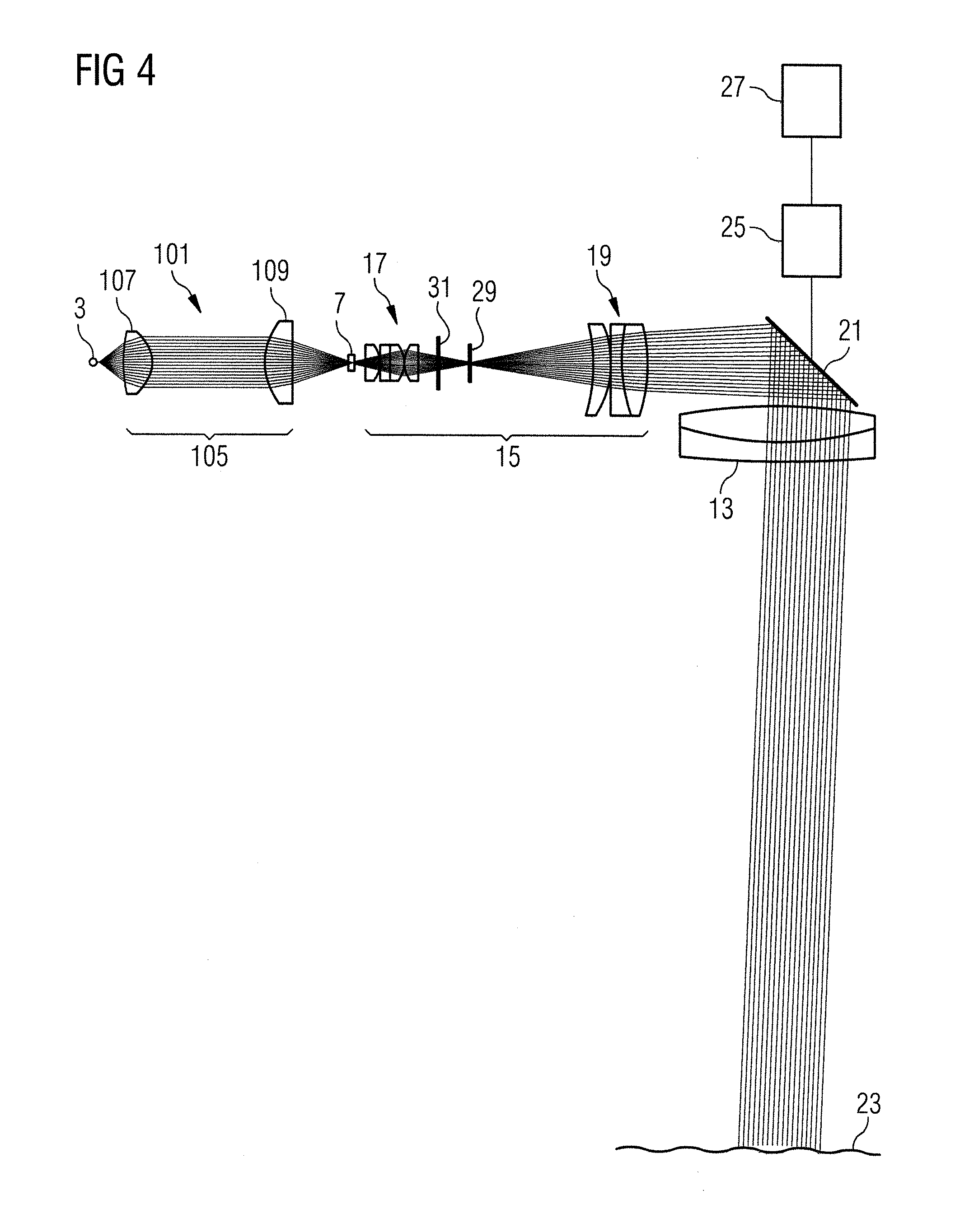Light source arrangement for an illumination device of a medical-optical observation
a technology of optical observation and illumination device, which is applied in the field of light source arrangement of illumination device of medical optical observation apparatus, can solve the problems of not being able to easily replace the optical components of existing illumination device, the illumination device is more bulky, and the more complex optical unit can be used preferably, so as to achieve the effect of reducing the size of the luminescence emitter, reducing the cost of operation, and ensuring the quality of the imag
- Summary
- Abstract
- Description
- Claims
- Application Information
AI Technical Summary
Benefits of technology
Problems solved by technology
Method used
Image
Examples
Embodiment Construction
[0023]A first exemplary embodiment of a light source arrangement according to the invention is described below with reference to FIG. 1. The figure shows the simplest construction of the light source arrangement 1 according to the invention, comprising merely a luminescence emitter, a light emitting diode 3 in the present exemplary embodiment, as primary light source and a converging lens 5. The converging lens 5 constitutes the imaging optical unit of the light source arrangement, with the aid of which a real image 7 of the light emitting diode 3 is generated. The optical parameters of the converging lens 5, that is to say its refractive index and the curvatures of the lens surfaces are chosen such that the magnification scale of the image 7 in comparison with the light emitting diode 3 as the original image lies between 1.5 and 2.5, and in particular between 2 and 2.5. This has the effect that the luminous area of the image 7 is 1.5 times to 2.5 times as large as the luminous area...
PUM
 Login to View More
Login to View More Abstract
Description
Claims
Application Information
 Login to View More
Login to View More - R&D
- Intellectual Property
- Life Sciences
- Materials
- Tech Scout
- Unparalleled Data Quality
- Higher Quality Content
- 60% Fewer Hallucinations
Browse by: Latest US Patents, China's latest patents, Technical Efficacy Thesaurus, Application Domain, Technology Topic, Popular Technical Reports.
© 2025 PatSnap. All rights reserved.Legal|Privacy policy|Modern Slavery Act Transparency Statement|Sitemap|About US| Contact US: help@patsnap.com



